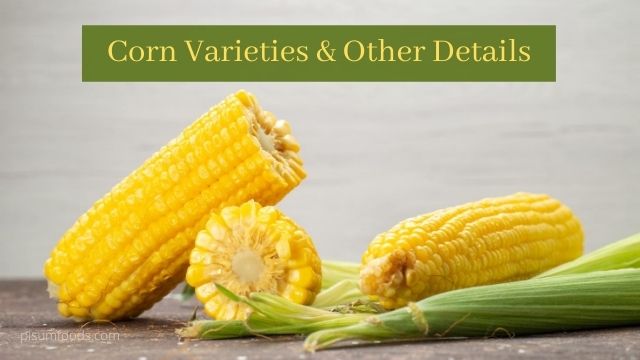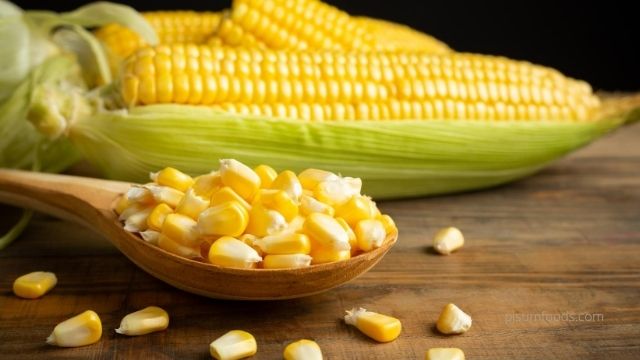 Translate
Translate Translate
TranslateMaize, also known as corn, is a cereal plant which yields grains in a set of rows on a cob. About 10,000 years ago, Maize was said to be domesticated by Indigenous people of southern Mexico. Now, it has become the staple food in many parts of our world, with its production increasing more than rice and wheat. Teosinte (Mexican grass, which is grown as a fodder crop) is said to be the first developed ancestor of maize. Maize came into existence due to human selection over centuries. Human domestication of Teosinte and mutation has led to the development of maize with huge cob size and several hundred kernels. Do you know what actually the meaning of the term ‘Maize’ is? Maize is a native Taino word meaning “sacred mother,” or “giver of life.”

The word maize and it’s meaning “Sacred mother” have a lot to do with my perception. First, let me describe to you about the appearance and the biological aspects of maize. The normal maize plant nearly grows up to 5 to 10 feet tall. Its stem is commonly composed of 20 internodes, each with a gap of nearly 18cm. Leaves growing at each internode are of length 9cms. Unlike other plants, maize has two types of inflorescences (Flowers), one is the male part which is called the “Tassel”, which is present on the top, and other is the female part called “Cob”, which is present at the middle of the plant in its internodes. During the maturity stage of the plant, the pollen grains from the tassel fuses with cob and fertilization process takes place. As a result, maize kernels are formed in the cob to give us this wonderful corn we eat. Maize crops can adapt to any climate and soil conditions, therefore farmers in India grow maize in different parts of the country.
While eating corn did anyone wonder how many kernels are present in one cob of corn? Surprisingly, an average cob of corn has nearly 800 kernels in 16 rows.
I observed this one day when we were working in the maize field during our practical class that all other crops mostly bear its fruit and productive part at the top, at its branches or in its underground stems like a potato. But only maize as a crop bears its productive part (Cob) in the middle of its stem, which makes me feel that maize is similar to our mothers. Our mothers carry us for 9 months in her stomach and bear all the stress during that period to bring us to this wonderful world we live in. Similarly, maize also bears its cob in the middle of its internodes to finally give us this great corn we eat daily. Another interesting fact about corn is that the folate levels and the iron content keep the haemoglobin levels up in pregnant women and prevent neural defects in the growing fetus.
““Life is not to live for ourselves, but the story of kindness and sacrifice, as corn undergoes a lot, but spreads happiness and sweetness for mankind”.”
This was my perception that I had about maize as a mother, but I have no idea how the person who coined the term “maize” framed the meaning of maize as “sacred mother,” or “giver of life.” I was actually surprised when I found out this fact.
Similarly, as compared to human beings, maize also has a very large family and species starting from Primitive ancestor (Teosinte). What if I tell you there are approximately 1200 corn hybrids and are grown in six of the seven continents except for Antarctica, isn’t it amazing! That’s what makes me feel that maize is also a large family, just like humans on this planet. Since we know that Mexico is the origin of Maize, obviously their staple food is the same, but what makes me surprised is that Mexico alone has developed nearly 700 corn-based dishes.
What do you think are these 700 corn-based dishes prepared from the same variety (or) type of corn? The answer is no. There are several thousand different varieties of corn grouped under several hundred landraces (a local cultivar of plant breed that has been improved by traditional agricultural methods). Many of these landraces of corn have been existing since our pre-Columbian times. Only in America, there is a record of 484 landraces over the past 100 years, all the landraces have been developed and adopted by humans under different environmental conditions such as soil, climate, water availability, etc. The several developed landraces of corn differ in cob size, kernel colour and flavour based on the broadly classified 6 types of corn, which we are going to briefly discuss in this article. Now I guess that it seems clear how these 700 corn-based dishes were prepared by Mexicans!
The classification of maize types depends on various factors such as the internal kernel structure, proportion of hard and soft endosperm and the starch content present in it. Another factor involved is the amount of sweetness of the kernel and amount of residual sugar in the kernel. This sweetness of kernel depends on the variety of maize and the time of harvest from the field. For example, let’s take sweet corn, its kernels have very high sugar content only when it is harvested at the right time. Experts say we should harvest sweet corn when its kernel colour changes from clear to milky. There are so many leading maize exporters in India who are ready to export corn to various countries.

There are six major types of corn, as mentioned:
As the name shows this corn explodes when heated to a certain temperature to form a white starchy mass which we enjoy eating as popcorn during our movie time. This is one of our oldest forms of corn. The shells of the kernel retain a proper amount of water to explode while heating. These corn are collectively gathered with the help of popcorn maize suppliers in India.
This corn is grown to have a plump and juicy kernel which has a high level of sugar content which we all love to boil, enjoy and eat. It is similar to field corn but harvested earlier so that the kernel has more sugar content than starch. Sweet corn has less shelf life and should be eaten fresh.
This corn has soft and starch-filled kernels, which makes it easy to grind. The most preferred colour of flour corn is white and is used in baked goods and many other food products we consume. As the name shows it’s used for making flour.
This corn is also called Field corn. It is named dent corn because it contains both hard and soft starches and becomes indented once it gets dried or matured. It is used for livestock feed, industrial products and to make processed foods.
It is also known as Indian corn. It is distinguished by a hard outer shell and the kernels of different colours. It is mostly cultivated in central and south America and is used for a similar purpose as dent corn.
This corn is just like flint corn because each kernel in the cob has a different colour. It looks very colourful and ornamental. When compared to other types of corn, this is grown only for ornamental purpose and not commercially.
“The Corn may be boiled or roasted but is still a Corn. One went through the hot waters and the other through the Fire, but Still the blessed Word corn”
Now as I am coming to the end, I like to come up with a question. How many varieties (or) types of corn have you eaten lately? Since corn has a large family and varieties, I know it’s difficult for you to answer this question, but I am sure that we are consuming corn every day in one or another form. But don’t hesitate to go for more varieties of corn! You will regret, Corn has different landraces that are pretty tasty and a good option for us and our environment.
We Pisum Food Services Pvt. Ltd, maize exporters in India feel proud to export premium quality corn to many countries in the world. Pisum Foods believes that Indian culture, food, flowers, and such other products should be spread to the entire world. Our executives at Pisum are trained to help and support our clients at each step of the export process. With our expertise and extensive experience in the export field, we make sure that the export of maize from India is a hassle-free process for our clients. If you are interested in corn export from India, Contact Pisum now!